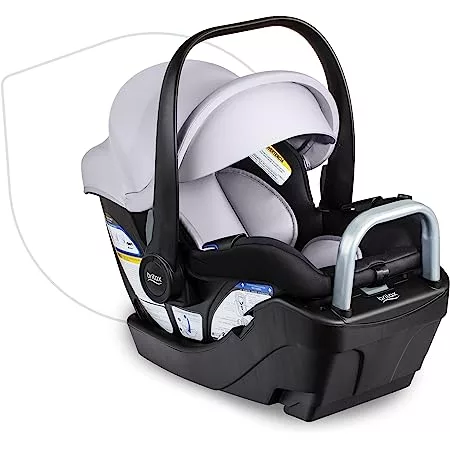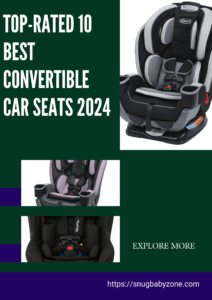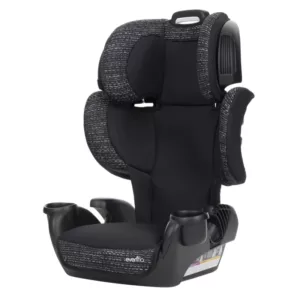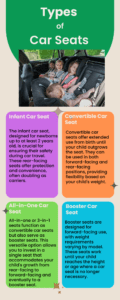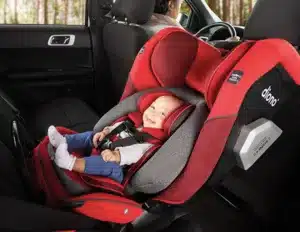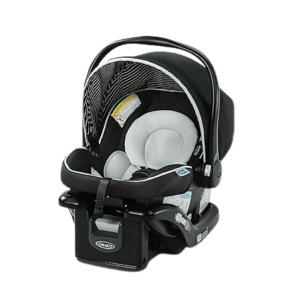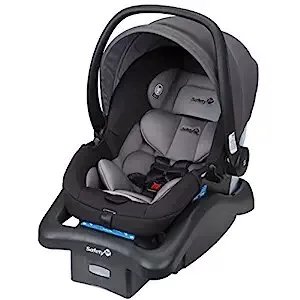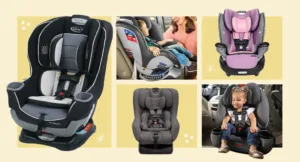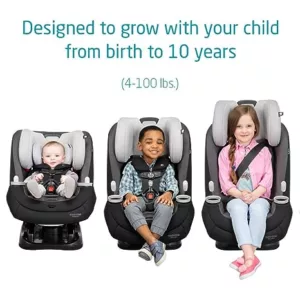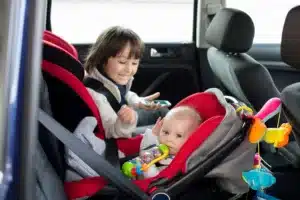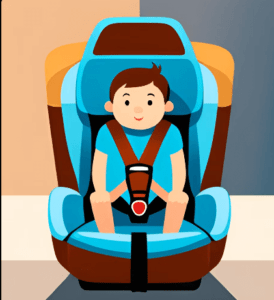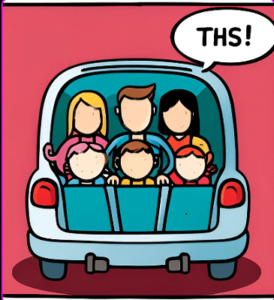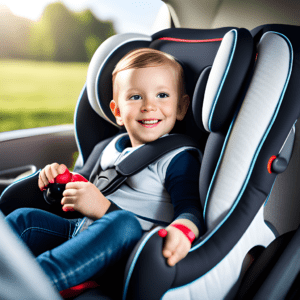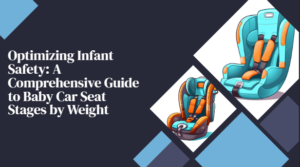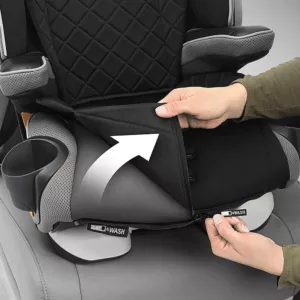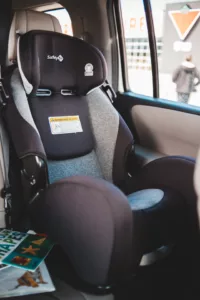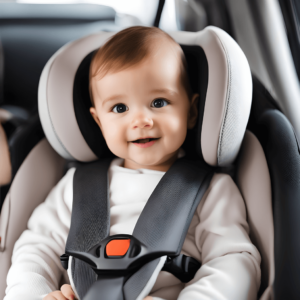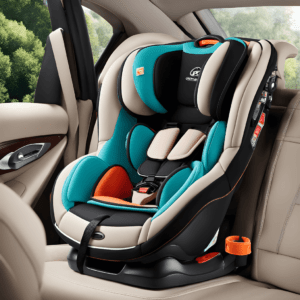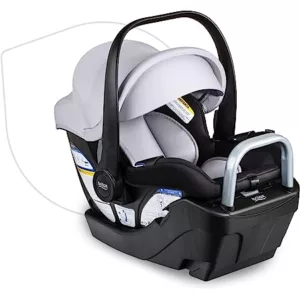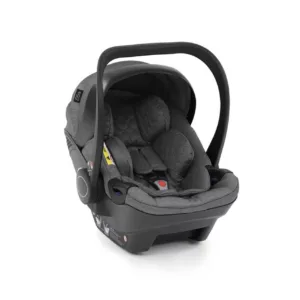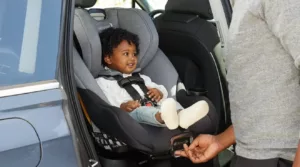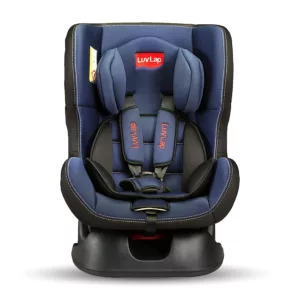Discover the secrets to How Perfectly Pairing Car Seat with Your Car, in our ultimate guide! From dimensions to accessories, unlock the keys to a perfect match for your little one’s safety and comfort.
Thank you for reading this post, don't forget to subscribe!The primary purpose of this article is to provide readers with comprehensive education and insights into the critical importance of effectively matching car seats with specific vehicles, all with the overarching goal of ensuring maximum safety for children during car travel.
Vehicle Seat Design and Pairing Car Seat with Your Car
The design of your vehicle’s seats plays a significant role in determining the compatibility of a car seat. In the quest for ensuring child safety and comfort during car travel, understanding how the design of vehicle seats can impact car seat compatibility is essential.
Table of Contents
ToggleVariations in Seat Shapes, Angles, and Contours – Car Seat Compatibility with Vehicle
Seat Shapes: Vehicle seats come in a wide array of shapes, sizes, and configurations. Some have contoured or bucket-style seats, while others are flat or bench-style. These variations can influence how well a car seat fits within your vehicle. For instance, a car seat designed to fit snugly in a bench-style back seat may not be compatible with a car that has highly contoured individual seats.
Seat Angles: The angle at which vehicle seats are positioned can vary between different makes and models. Some seats have a more reclined angle, while others are more upright. Car seats also have reclined angles, and compatibility issues can arise if the angle of the vehicle seat conflicts with the car seat’s recommended installation angle.
Seat Contours: Vehicle seats often feature unique contours and curves that may not align with the shape of a car seat base. These contours can create gaps or uneven contact points when installing a car seat, potentially compromising the stability and safety of the installation.
Key Considerations for Car Seat Compatibility with Your Car
Measurements: Before purchasing a car seat, it’s essential to measure both the car seat and the designated seating area in your vehicle. Compare these measurements to ensure that the car seat will fit securely and comfortably.
Consult Manufacturer Guidelines: Car seat manufacturers often provide guidelines specifying compatible vehicle makes and models for their products. These guidelines can help you select a car seat that is well-suited to your vehicle’s seat design.
Professional Inspection: Consider having a certified Child Passenger Safety Technician inspect the installation of your car seat in your vehicle. These experts can offer guidance on achieving a proper fit, even in cases where seat designs differ.
Test the Fit: Test the car seat in your vehicle before making a final purchase. This practical approach enables you to evaluate the compatibility of the car seat with the contours and angles of your vehicle’s seats firsthand.
Seek Vehicle-Specific Accessories: Some car seat manufacturers offer vehicle-specific accessories or adaptors designed to enhance compatibility. These accessories can help bridge the gap between the car seat and the vehicle’s seat design.
Understanding the impact of your vehicle’s seat design on car seat compatibility is crucial for ensuring your child’s safety and comfort during car travel. Variations in seat shapes, angles, and contours can influence the fit and stability of car seats, making it essential to consider these factors when selecting and installing a car seat in your vehicle.
Seatbelt and LATCH Systems – Car Seat Fit Guide
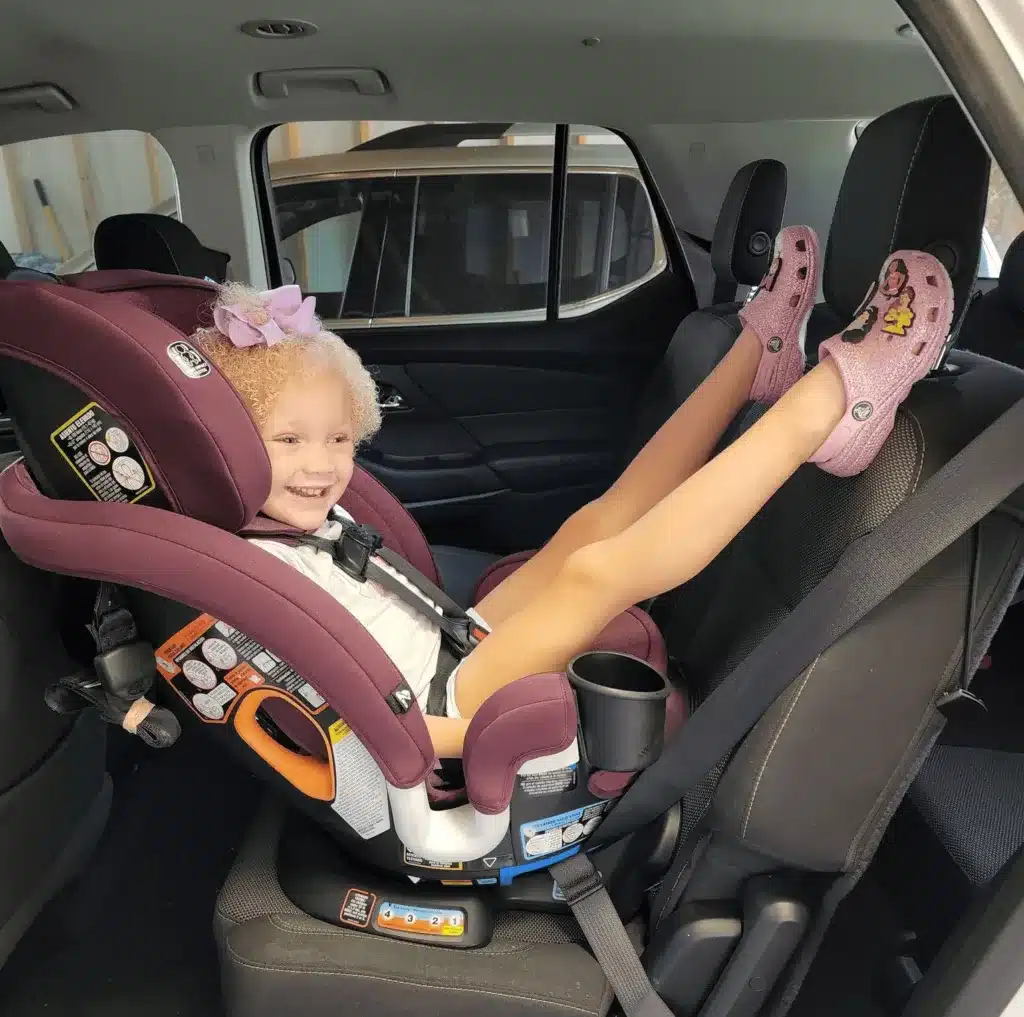
When it comes to installing a child car seat, the seatbelt and LATCH (Lower Anchors and Tethers for Children) systems in your vehicle are pivotal components that determine the safety and compatibility of your setup. Understanding how these systems should align with the car seat’s installation requirements is essential to ensure a secure and safe fit for your child.
Seatbelt Installation – Pairing Car Seat with Your Car
The seatbelt is a fundamental means of securing a car seat in your vehicle. Here’s what you need to know:
Seatbelt Configurations: Different car seats may require specific seatbelt configurations for proper installation. Some car seats utilize a lap belt, while others may require a lap-shoulder belt combination. It’s crucial to refer to both your car seat’s instructions and your vehicle’s owner’s manual to identify the correct seatbelt configuration for your specific car seat and vehicle.
Locking Mechanisms: Many modern vehicles are equipped with locking seatbelts, which can hold the car seat tightly in place when properly engaged. Some car seats may also have built-in lock-offs or features that enable the seatbelt to be securely locked for installation.
Belt Path: Pay attention to the car seat belt path, which is the route the seatbelt must follow through or around the car seat. Ensure the seatbelt threads through this path correctly to achieve a snug and secure fit.
LATCH System Installation – Pairing Car Seat with Your Car
The LATCH system is designed to simplify car seat installation by using lower anchors and tethers. Here’s what you should know about LATCH:
Lower Anchors: Lower anchors are metal bars or connectors built into the vehicle’s rear seat creases. Car seats equipped with the LATCH system have corresponding connectors that attach to these lower anchors.
Tethers: Car seats also come with ropes that can be secured to designated tether anchors in the vehicle. Tethers provide additional stability by reducing forward movement in case of an accident.
Weight Limits: Be aware of the weight limits associated with LATCH systems. Most systems have weight restrictions for both the child and the car seat, so it’s essential to consult your car seat’s manual and your vehicle’s owner’s manual to ensure compliance.
Upper Tether Anchor Location: Check your vehicle for the location of the upper tether anchors. Some cars have these anchors on the rear shelf, the back of the seat, or the floor of the trunk. Ensure your car seat’s tether strap can comfortably reach and attach to these anchors.
Key Considerations – How Perfectly Pairing Car Seat with Your Car
Follow Instructions: Always adhere to the installation instructions provided by both the car seat manufacturer and your vehicle’s owner’s manual. Following these guidelines ensures a secure fit.
Professional Inspection: Consider having a certified Child Passenger Safety Technician inspect your car seat installation. These experts can verify that the seatbelt or LATCH system is correctly configured and that the car seat is properly secured.
Understanding how the seatbelt and LATCH systems in your vehicle align with your car seat’s installation requirements is vital for ensuring a safe and secure fit for your child. By following the manufacturer’s instructions and consulting your vehicle’s manual, you can provide your child with the best possible protection during car travel.
Car Seat Dimensions – Pairing Car Seat with Your Car
When it comes to choosing the right car seat for your vehicle and ensuring a safe and comfortable ride for your child, paying attention to car seat dimensions is paramount. Here’s why measuring both the car seat and your vehicle’s seating area is essential:
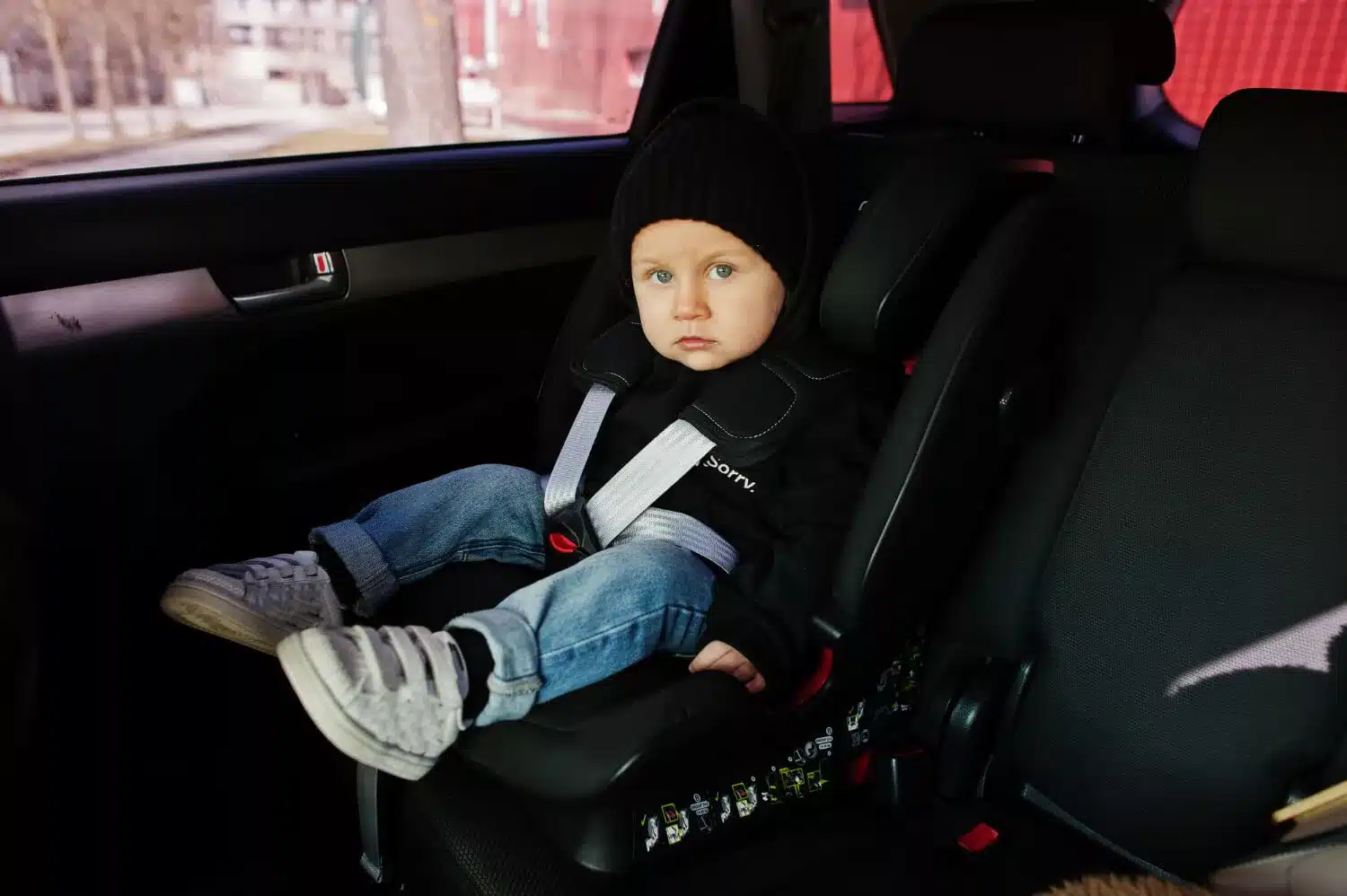
Width, Height, and Depth Matters
Width: Car seats come in various widths to accommodate different vehicle sizes and configurations. Measuring the width of your car seat and comparing it to the available space in your vehicle ensures a proper fit without overcrowding the back seat.
Height: Car seat heights vary significantly, and not all car seats will fit comfortably in your vehicle, especially if you have limited headroom. Measuring the height of your car seat and checking for any height restrictions in your vehicle is crucial to prevent compatibility issues.
Depth: The depth of a car seat, which is the front-to-back measurement, can also affect how well it fits in your vehicle. It’s important to measure both the depth of your car seat and the available space in your vehicle to ensure that the car seat doesn’t intrude on the legroom of front-seat passengers.
Compatibility is Key – Pairing Car Seat with Your Car
Car seat manufacturers provide specifications for the dimensions of their products, including width, height, and depth. Before purchasing a car seat, consult these specifications to ensure that it aligns with the dimensions of your vehicle’s seating area.
Vehicle seat designs and sizes can vary widely between makes and models. What fits seamlessly in one vehicle may not be suitable for another. Measuring both the car seat and the available space in your vehicle helps you select a car seat that complements your vehicle’s design.
Achieving a Secure Fit – Pairing Car Seat with Your Car
Proper fit is not just about convenience; it’s also about safety. Car seats must be securely installed to protect your child in the event of a collision. A car seat that fits snugly within your vehicle’s seating area is more likely to provide secure and stable installation.
When a car seat is too wide, tall, or deep for your vehicle, it can lead to difficulties in securing it properly. It can result in movement and instability during travel, potentially compromising your child’s safety.
Consider Multiple Configurations – Pairing Car Seat with Your Car
If you have multiple vehicles or plan to use the same car seat in different cars, consider measuring the seating areas in all the vehicles. It ensures that the car seat is versatile and can be safely installed in each vehicle without compatibility issues.
Compatibility Guides – Pairing Car Seat with Your Car
The world of child car seats is a vast one, filled with options that cater to different ages, sizes, and preferences. But beyond choosing the perfect car seat, there’s another critical factor that often gets overlooked – compatibility with your vehicle. It is where Compatibility Guides come to the rescue, offering you a clear path to a safer, smoother ride.
Why Consult Compatibility Guides? Pairing Car Seat with Your Car
Car seat manufacturers pour extensive research and expertise into ensuring their products provide the utmost safety for your child. However, even the safest car seat can only protect your precious cargo if it’s properly installed in your vehicle.
Compatibility guides are a hidden treasure chest of knowledge that car seat manufacturers provide to assist parents in making the right choices. They meticulously list specific vehicle makes and models that are compatible with their car seats, saving you from the uncertainty of trial and error.
Peace of Mind in Every Journey
Picture this: You’re about to embark on a family road trip, and your child is securely strapped into their car seat. You exhale a sigh of comfort, reassured that your little one is secure and sound. But that sigh of convenience becomes a gasp of panic when you realize the car seat doesn’t fit snugly in your vehicle.
A Boost for Safety
Your child’s safety is paramount, and compatibility guides are your trusty sidekick on this journey. They ensure that your car seat is not just a secure cocoon for your child but also an integrated part of your vehicle’s safety system.
When a car seat is compatible with your vehicle, it means it has been tested and approved to work seamlessly together. This synergy enhances the effectiveness of both the car seat and your car’s safety features, providing an extra layer of protection that every parent craves.
Enhancing Car Seat Compatibility with Vehicle-Specific Accessories
When it comes to guaranteeing the ideal match between your child’s car seat and your vehicle, it’s crucial to explore all the options at your disposal thoroughly. One avenue to consider is vehicle-specific accessories or adapters offered by some car seat manufacturers. These accessories can play a vital role in enhancing compatibility and safety. Here’s why they matter:
- Tailored Solutions for a Secure Fit
Some car seat manufacturers go the extra mile by designing and producing accessories or adapters that are specifically tailored to certain vehicle makes and models. These accessories are engineered to bridge the gap between your car seat and your vehicle’s seating area, ensuring a secure and snug fit.
- Overcoming Compatibility Challenges:
Vehicle-specific accessories are particularly valuable when you encounter compatibility challenges due to unique vehicle seat designs or dimensions. They are designed to address specific compatibility issues, such as irregular seat shapes or tight spaces.
For example, if your vehicle’s rear seat has a deep contour that doesn’t align well with the base of your car seat, a custom-fit accessory might fill in the gap, creating a level and secure platform for your child’s seat.
- Ease of Installation:
These accessories are typically easy to install and use. They may involve simple click-and-lock mechanisms, quick-release features, or intuitive designs that eliminate guesswork during installation.
- Enhanced Safety and Stability:
Vehicle-specific accessories contribute to improved safety and stability. By reducing movement and ensuring a secure attachment, they minimize the risk of the car seat shifting or becoming dislodged during travel, especially in the event of sudden stops or collisions.
- Peace of Mind for Parents:
Knowing that you have a vehicle-specific accessory designed to optimize compatibility can provide peace of mind for parents and caregivers. It eliminates concerns about whether the car seat will fit securely in your specific vehicle, allowing you to focus on your child’s safety and comfort.
- Additional Features:
Some accessories may offer additional features such as cup holders, storage compartments, or compatibility with stroller systems. These additional conveniences can elevate your travel experience as a whole.
- Compatibility Verification:
Before purchasing a vehicle-specific accessory, ensure that it is compatible with both your car seat model and your vehicle make and model. Consult the car seat manufacturer’s guidelines and the accessory’s documentation to confirm compatibility.
Vehicle-specific accessories or adapters provided by certain car seat manufacturers are valuable tools for enhancing compatibility and ensuring a secure fit between your child’s car seat and your vehicle.
Navigating Car Seat Compatibility Leveraging Online Resources – Pairing Car Seat with Your Car
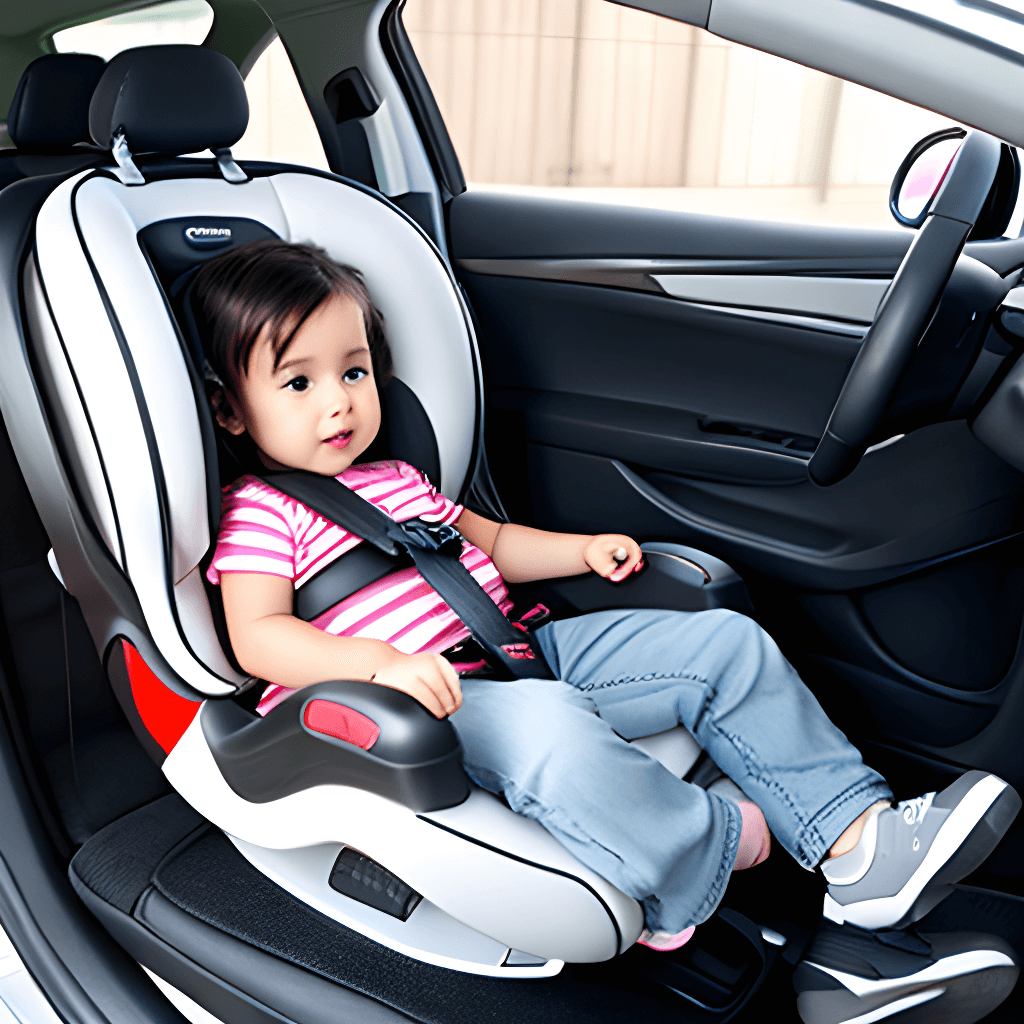
In the digital age, the wealth of information available online has made it easier than ever for parents and caregivers to make informed decisions regarding car seat compatibility. Online resources, including manufacturer websites and specialized tools, are invaluable in the quest for ensuring a secure and compatible fit. Here’s how to make the most of these valuable resources:
Manufacturer Websites – Your First Stop for Information
Manufacturer Guidance: Most car seat manufacturers provide comprehensive information about their products on their official websites. It includes detailed specifications, installation instructions, and compatibility guidelines.
Product Documentation:
You can often find user manuals and product documentation that highlight compatibility requirements and considerations. These documents are treasure troves of information and should be noticed.
Search Tools for Precision:
Compatibility Checkers: Many car seat manufacturer websites offer dedicated compatibility checkers or search tools. These resources enable you to enter the exact make and model of your vehicle, and they will generate a roster of compatible car seats.
Filtering Options: Some websites allow you to filter car seat options based on your vehicle’s characteristics, making it even easier to narrow down your choices to those that align perfectly with your vehicle’s seating area.
Verified Information – Pairing Car Seat with Your Car
Reliability: Manufacturer websites are authoritative sources for car seat compatibility information. You can have confidence that the information provided is both precise and current.
Safety Standards: Manufacturer websites also typically include information about how their products meet safety standards, further assuring parents and caregivers of the quality and Safety of their chosen car seats.
Independent Review Sites and Forums:
Community Insights: Beyond manufacturer websites, consider exploring independent review sites and parenting forums. Real-world experiences shared by other parents can provide valuable insights into the compatibility of specific car seats with different vehicle models.
Safety Regulations: Government websites like the United States National Highway Traffic Safety Administration (NHTSA) provide valuable resources, safety regulations, and instructions on selecting and using car seats. These sites can complement manufacturer information.
Confirmation: While online resources are invaluable, it’s crucial to verify the information by comparing it from various sources to guarantee its accuracy and comprehensiveness.
Online resources are powerful tools that can simplify the process of selecting a car seat that perfectly matches your vehicle. Manufacturer websites, compatibility checkers, and user forums provide a wealth of information and insights, allowing you to make informed choices for your child’s Safety and comfort during car travel. Harness the convenience of these digital resources to ensure a secure and compatible fit for your peace of mind on the road.
Testing In-Store: Ensuring Car Seat Compatibility with Your Car
Choosing the right car seat for your child and your vehicle is a critical decision that requires careful consideration. While online research and manufacturer guidelines are valuable, there’s no substitute for a hands-on experience. Visiting a retailer with your car to test the car seat in your vehicle can provide invaluable assurance of compatibility. Here’s why this approach is essential:
- Real-World Assessment:
Testing a car seat in your vehicle allows you to assess compatibility in a real-world setting. You can see firsthand how the car seat fits within the confines of your car’s seating area.
- Eliminating Guesswork:
The dimensions of car seats and the design of vehicle seats can be intricate, and it can be difficult to grasp compatibility solely from specifications. Testing in-store removes the guesswork, ensuring that the car seat fits as expected.
- Hands-On Installation:
In-store demonstrations often include professional assistance from knowledgeable staff who can guide you through the installation process. This hands-on experience ensures that the car seat is properly secured and that you are comfortable with the installation steps.
- Checking Ease of Use:
Trying out the car seat in your vehicle allows you to assess how user-friendly it is. You can determine if the car seat is easy to install, adjust, and use, which is crucial for everyday convenience.
- Confirming Safety:
Testing in-store lets you verify that the car seat sits securely and stably in your vehicle. It allows you to address any concerns about stability or fitment before making a purchase.
- Exploring Compatibility with Multiple Vehicles:
If you have multiple vehicles in your household, testing the car seat in each vehicle can help you choose a car seat that works seamlessly across all your cars.
- Expert Advice:
Retail staff, especially those at specialized baby stores, often have extensive knowledge about car seats and can offer valuable guidance and suggestions tailored to your particular vehicle and requirements.
- Peace of Mind:
By physically testing the car seat in your vehicle, you gain peace of mind, knowing that you’ve made an informed choice that prioritizes both safety and comfort for your child.
- Comparing Options:
In-store testing allows you to compare different car seat models side by side, considering factors like size, features, and ease of use to make the best choice for your family.
Visiting a retailer with your car to test a car seat provides a hands-on, real-world assessment of compatibility that online research cannot replicate. This approach allows you to make a confident, informed decision, ensuring that the car seat you choose fits securely and comfortably in your vehicle and, most importantly, prioritizes the safety and well-being of your child during every journey.
Seeking Expert Guidance Consulting Child Passenger Safety Technicians – Perfectly Pairing Car Seat with Your Car
When it comes to the safety of your child during car travel, seeking expert advice is a wise and responsible choice. Certified Child Passenger Safety Technicians are trained professionals who specialize in car seat safety. Encouraging readers to reach out to these Professionals can play a substantial role in guaranteeing that car seats are both compatible with and correctly installed in your vehicle. Here’s why expert advice matters:
- Specialized Training:
Child Passenger Safety Technicians undergo extensive training and certification processes to become experts in car seat safety. They stay up-to-date with the latest regulations, best practices, and car seat models.
- In-Depth Knowledge:
These professionals have a deep understanding of car seat features, installation techniques, and compatibility considerations. They can evaluate your specific vehicle and car seat combination, taking into account any unique challenges.
- Customized Guidance:
Child Passenger Safety Technicians provide personalized recommendations tailored to your vehicle, car seat, and child’s age, weight, and height. It ensures that you make the best choices for your family’s unique needs.
- Hands-On Assistance:
Experts can demonstrate proper car seat installation techniques, making certain the car seat is firmly attached and in the right position. They can also resolve any inquiries or doubts you have.
- Inspection and Verification:
Child Passenger Safety Technicians can perform comprehensive inspections to verify the correct installation of the car seat. This verification process eliminates any doubts about the compatibility and safety of your setup.
- Addressing Compatibility Issues:
If compatibility challenges arise during the evaluation, experts can provide practical solutions and recommendations. They may suggest vehicle-specific accessories, adjustments, or alternative car seat options.
- Staying Current with Regulations:
Car seat safety regulations can change over time. Experts stay current with these regulations and can guide you on compliance and best practices.
How to Find Child Passenger Safety Technicians? Pairing Car Seat with Your Car
Many communities have certified Child Passenger Safety Technicians who offer free or low-cost car seat checks and consultations. They can often be found at local hospitals, fire stations, police departments, or through community organizations.
These experts provide valuable knowledge, hands-on assistance, and peace of mind, making them indispensable resources for parents and caregivers who prioritize the well-being of their children during car travel.
Regularly Checking for Recalls and Updates – Pairing Car Seat with Your Car
When it comes to the security of your child while on the road, staying informed and vigilant is of utmost importance. One critical aspect of ensuring car seat safety is regularly checking for recalls and updates. Here’s why it’s essential and how to go about it:
- Recall Awareness:
Recalls can happen even with the most reputable car seat brands. These recalls are initiated when safety issues or defects are discovered, which may pose risks to children. Staying informed about memories helps you address safety concerns promptly.
- Vehicle Compatibility:
Sometimes, recalls or updates may pertain to the compatibility of certain car seats with specific vehicle models. Being aware of such issues ensures that your car seat remains compatible with your vehicle.
- Easy Verification:
Verifying recall status is relatively simple. Car seat manufacturers typically provide information on their websites about recalls and updates.
- Prompt Action:
If your car seat or vehicle is subject to a recall, it’s crucial to follow the manufacturer’s instructions for resolving the issue. It might involve getting a replacement part, adjusting the installation, or, in some cases, replacing the car seat altogether.
- Child Safety:
Regularly checking for recalls and updates is a proactive step in ensuring your child’s safety. It demonstrates your commitment to providing the best protection during car travel.
How to Check for Recalls and Updates? Pairing Car Seat with Your Car
Visit the manufacturer’s website: Car seat manufacturers typically maintain recall and update information on their official websites. You can search for your specific car seat model and check for any associated recalls or updates.
NHTSA Website: The NHTSA website is a valuable resource for checking car seat recalls and safety notices. You can search for recalls by your car seat’s brand and model or by your vehicle’s make and model.
Product Registration: Register your car seat with the manufacturer. This way, you’ll receive notifications about recalls or updates directly from the manufacturer.
Set Up Alerts: Register to receive email notifications from the NHTSA or car seat manufacturers to stay updated on safety-related announcements and recall information.
Keep Records: Maintain records of your car seat’s purchase date, model number, and serial number. This information can be handy when checking for recalls or warranty-related inquiries.
Regularly checking for recalls and updates for both your car seat and your vehicle is a fundamental part of ensuring your child’s safety during car travel. By staying informed and taking prompt action in response to recalls or safety notices, your dedication to providing the utmost safety for your child during travels is clearly evident. Safety is an ongoing responsibility, and these checks are a vital part of that commitment.
Stay Updated on Recalls and Safety Notices – Car Seat Fit in Car
Ensuring the safety of your child during car travel requires continuous vigilance and proactive measures. One crucial aspect of this responsibility is regularly checking for recalls and updates related to your car seat and vehicle. Here’s why it’s crucial and the steps to follow:
- Recall Awareness:
Recalls are initiated when safety issues or defects are identified in car seats or vehicles. These issues may pose risks to your child’s safety. Remaining updated on recalls allows you to promptly address potential safety issues.
- Vehicle Compatibility:
Some recall or updates may specifically pertain to the compatibility of certain car seats with specific vehicle models. Being aware of these issues ensures that your car seat remains a secure fit in your vehicle.
- Easy Verification:
Verifying recall status is relatively straightforward. Car seat manufacturers typically provide recall and update information on their websites. You can also visit the National Highway Traffic Safety Administration (NHTSA) website to access recall information and subscribe to receive notifications.
How to Check for Recalls and Updates – Car Seat Compatible with Car
Visit the manufacturer’s website: Car seat manufacturers typically maintain recall and update information on their official websites. You can search for your specific car seat model and check for associated recalls or updates.
NHTSA Website: The NHTSA website is a valuable resource for checking car seat recalls and safety notices. You can search for recalls by your car seat’s brand and model or by your vehicle’s make and model.
Product Registration: Register your car seat with the manufacturer. This way, you’ll receive notifications about recalls or updates directly from the manufacturer.
Set Up Alerts: Subscribe to email notifications from the NHTSA or car seat manufacturers to remain updated on safety-related developments and recall notices.
Maintain Records: Keep records of your car seat’s purchase date, model number, and serial number. This information can be handy when checking for recalls or warranty-related inquiries.
Checking for recalls and updates for both your car seat and your vehicle is a vital part of ensuring your child’s safety during car travel. By staying informed and taking prompt action in response to recalls or safety notices, you demonstrate your unwavering commitment to providing the highest level of protection for your child on the road. Safety is an ongoing responsibility, and these checks are a crucial component of that commitment.
Warranty and Return Policy: Prioritizing Flexibility – Pairing Car Seat with Your Car
Before making a final decision on your child’s car seat, it’s wise to review both the car seat manufacturer’s warranty and the retailer’s return policy. This precaution ensures flexibility in case any unexpected compatibility issues arise. Familiarize yourself with the warranty’s terms and conditions for repairs or replacements and understand the retailer’s return process. This way, you can make an informed choice, knowing that you have options to address any unforeseen challenges, ultimately prioritizing your child’s safety and comfort on the road.
Consider Long-Term Needs – Car Seat Compatibility with Your Car
When selecting a car seat, it’s essential to think beyond the immediate future. Consider your long-term needs, especially if you plan to use the car seat for several years or with multiple children and vehicles. Versatility and adaptability become paramount in such cases. Investing in a car seat that accommodates growth, offers various installation options, or can be easily transferred between vehicles can save you time, effort, and money down the road. By planning, you ensure that your child’s safety remains a top priority as they grow and as your family’s needs evolve, providing peace of mind for years to come.
Conclusion – Car Seat Compatibility with Your Car – Your Ultimate Guide
In the journey of parenthood, few responsibilities are as paramount as ensuring the safety and comfort of your child during car travel. This comprehensive guide has unveiled the secrets to achieving seamless car seat and vehicle compatibility, empowering you with knowledge and insights to make informed decisions for your little one’s well-being.
From understanding the nuances of vehicle seat design and its impact on car seat compatibility to mastering the intricacies of seatbelt and LATCH systems, we’ve delved into the essential details. You now know the importance of measuring car seat dimensions and how vehicle-specific accessories can bridge compatibility gaps.
We’ve explored the convenience of online resources, offering guidance on navigating manufacturer websites and utilizing compatibility checkers. You’ve learned about the invaluable hands-on experience of testing car seats in-store and seeking expert advice from certified Child Passenger Safety Technicians.
Staying vigilant by checking for recalls and updates has become second nature, and you understand the significance of warranty and return policies for added flexibility. Lastly, we’ve emphasized the importance of considering your long-term needs, ensuring that your child’s safety remains a top priority as they grow and as your family’s needs evolve.
In the pursuit of a perfect car seat-vehicle match, you’ve equipped yourself with knowledge, resources, and a commitment to safety. With these tools at your disposal, you can embark on every car journey with confidence, knowing that you’ve prioritized your child’s safety and comfort above all else. Your dedication to their well-being sets the foundation for countless safe and memorable adventures together on the road ahead.
Frequently Asked Questions – Car Seat Compatibility with Your Car
How is my car seat compatible with my vehicle?
Check the car seat manufacturer’s guidelines for a list of compatible vehicle makes and models.
Can I use the LATCH system with any car seat and vehicle combination?
No, not all car seats and vehicles are compatible with the LATCH system. Consult both your car seat and vehicle manuals to ensure compatibility.
Are online compatibility checkers on manufacturer websites reliable?
Yes, manufacturer-provided online compatibility checkers are reliable sources for matching car seats with specific vehicle models.
Is it essential to visit a retailer to test car seat compatibility in my vehicle?
While not mandatory, testing a car seat in your vehicle at a retailer provides hands-on assurance of compatibility, especially if you have unique seating configurations or concerns.
